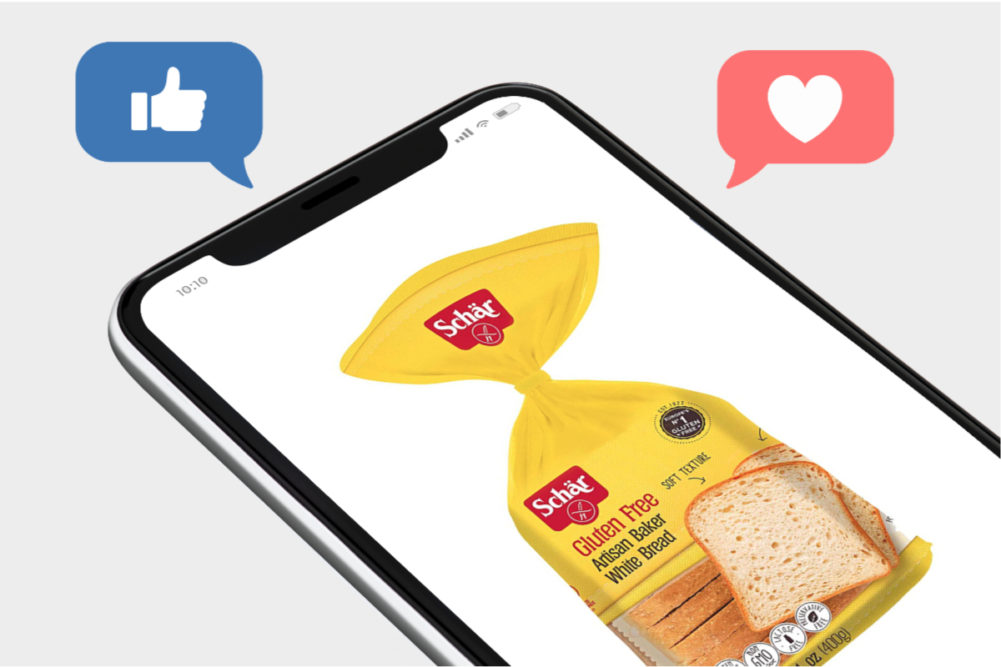LYNDHURST, NJ. — Schar, a maker of gluten-free baked foods, is transforming influencer marketing into a portal for e-commerce.
The brand last year teamed up with Perlu, a community platform connecting brands with social media influencers, to launch an awareness campaign aimed at younger consumers. It partnered with 55 Instagram influencers who generated more than 1 million impressions through sponsored posts.
“The audience on Instagram is young and playful,” said Alexandra Lazar, community manager at Schar. “That helped us reach a completely new consumer.”
Perlu recently launched a new functionality that enables consumers to make a purchase directly from an Instagram post. It directs consumers from an influencer’s Instagram story to an e-commerce landing page, where they can order directly from Schar or through online retailers like Amazon and Walmart.
The tool stimulates purchases by enabling consumers to act on motivation to buy when it is at its peak, Ms. Lazar said.
“If someone sees a trusted influencer that they know and love, and they've tried some of the other products that the influencer has used before, they’re going to swipe up on that post and say, ‘Wow, this is super easy. Let me just add this in my basket,’” she said. “The main point is that it’s convenient, and it’s coming from a source they know and trust.”
Data from CivicScience show consumers place a high level of trust in social media influencers, with one-in-five Americans making a purchase based on an influencer’s recommendation in 2019. For consumers with celiac disease and other food sensitivities, those relationships often take on added importance.
 “In our research, we’ve found consumers who are gluten-free because of celiac aren’t necessarily going to a doctor for more information,” Ms. Lazar said. “They’re going online.”
“In our research, we’ve found consumers who are gluten-free because of celiac aren’t necessarily going to a doctor for more information,” Ms. Lazar said. “They’re going online.”
Specifically, they’re turning to smaller influencers with expertise in celiac disease and gluten-free lifestyles. These micro-influencers typically have between 1,000 to 100,000 followers. Their highly targeted, specialized content grants them more sway over purchasing decisions than larger influencers with more general audiences.
As an example, Ms. Lazar said an influencer in Michigan with just 2,000 followers had a direct impact on the brand’s website traffic in 2020.
“Before we partnered with her, Michigan was the 30th state in terms of traffic coming to our site,” she said. “She drove it into the top 10.”
Translating social media engagement into e-commerce sales takes time. The key is maintaining a sense of authenticity.
“Influencers usually start ‘soft’ by introducing our brand to their followers,” Ms. Lazar said. “Then we schedule them for two posts, look for the ones that perform really well, and choose who to partner with to deliver our e-commerce portal. We don’t say, ‘Okay, here's a link for this brand you've never heard of.’ We start the conversation early so they can get familiar with our brand first.”
Schar’s partnership with Perlu offers benefits that extend beyond e-commerce. The brand also leverages influencers to better understand how consumers shop in store.
“One of our priorities is driving consumers from purchasing their gluten-free bread in the freezer to purchasing it fresh off the shelf,” Ms. Lazar said. “Influencers can use their platform to start a conversation with their followers about where they shop for bread. We can use those insights to assess where the biggest gaps are.”






